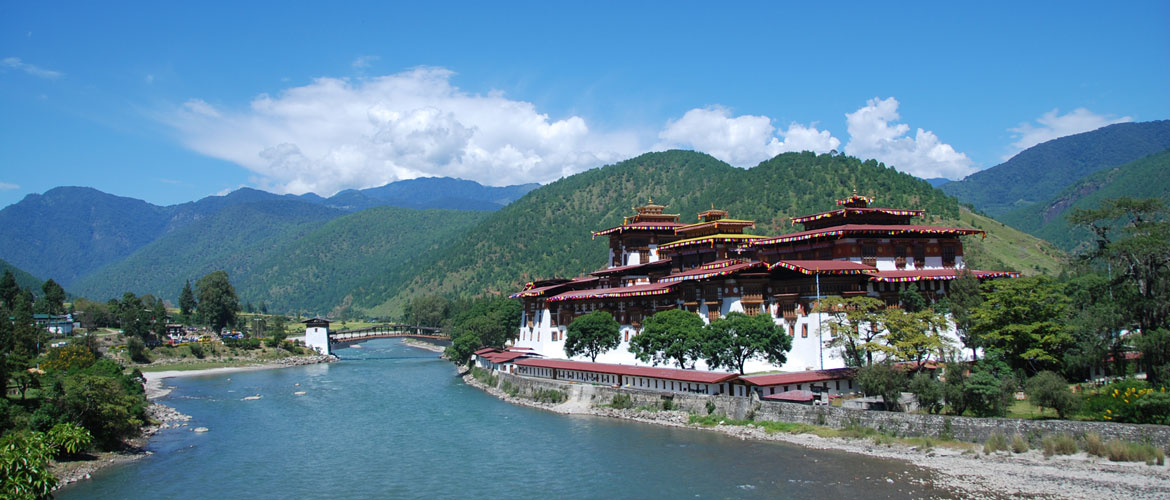
Location: Punakha
Zhabdrung built the Punakha Dzong in 1637. According to the narratives, the chief carpenter “Zow Balep” who was commissioned to construct the Dzong had a vision of the impressive architectural design of the Dzong in his dream which was then actualized. The Dzong was invaded twice by the Tibetan troops in 1639 and 1644. The Tibetan invasion failed on both accounts. There are also stories about the Tibetan commander publicly accepting the defeat to Zhabdrung. To commemorate the victory, a festival known as the Punakha Domche was celebrated. This tradition is continued even today where men play a role of Pazaps (Victorious soldiers) and reenact the war. Another significant event that took place in the Dzong was the institution of Monarchy in Bhutan by crowing Ugyen Wangchuck as the First King. Punakha valley was the first capital of Bhutan and Dzong served as the seat of the central Government.
The Dzong is built on the confluence of the Pho (Male) Chhu and Mo (Female) Chhu River. A three steep wooden staircases lead into the Dzong. The staircases were designed to be removed during the times of war making the Dzong impenetrable. The Dzong has a six storied central tower which houses the most sacred relic in the country. The relic is a self-created image of the Bodhisattva of compassion. The assembly hall for the monks known as the Kunrey houses a gigantic statue of Buddha, Zhabdrung and Guru Rinpoche. One of the temples within the Dzong has the embalmed body of Zhabdrung. Zhabdrung is known for unifying modern day Bhutan. As a tradition, all Kings begin their reigns by offering prayer at this shrine.